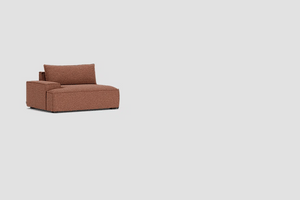
Scandinavian Architecture & Danish Interiors
Scandinavian Architecture & Danish Interiors
Known for their minimalist designs, use of natural materials, and functional yet stylish approach, Scandinavian architecture and Danish interiors have become a sought-after style for those looking to create a cozy, yet modern living space.
Scandinavian architecture is characterized by simplicity, functionality, and a strong connection to nature. It emerged in the mid-20th century as a response to the Modernist movement and has since become one of the most influential design styles in the world.

The use of natural materials, such as wood and stone, is a prominent feature of Scandinavian architecture. The designs often feature clean lines, geometric shapes, and an emphasis on natural light. With long, dark winters, Scandinavian architects have made use of large windows and skylights to bring in as much natural light as possible, creating bright, airy spaces even on the darkest of days.

A key feature of Scandinavian architecture is its emphasis on functionality. With limited living space in many Nordic countries, architects have developed solutions that are both practical and aesthetically pleasing, such as built-in storage solutions and multifunctional furniture.
The interiors are often open and spacious, with minimal clutter and a focus on functionality. The concept of "hygge" (a Danish word meaning cozy and comfortable) is also an important aspect of Scandinavian design. Homes are designed to create a warm and inviting atmosphere, with features such as fireplaces, soft, plush textiles, and comfortable furniture that invites you to unwind and relax.

One of the most famous examples of Scandinavian architecture is the work of the Danish architect, Jørn Utzon, who designed the Sydney Opera House. Other notable architects include Alvar Aalto from Finland and Arne Jacobsen from Denmark.

Danish interiors are a subset of Scandinavian design, and they are known for their clean lines, natural materials, and minimalist approach. The Danish have long been known for their love of design and their appreciation for quality craftsmanship, which is evident in their homes. One of the most notable aspects of Danish interiors is their use of color. While many Scandinavian designs are monochromatic, Danish interiors often incorporate pops of color in unexpected places, such as brightly coloured chairs or a statement wall.
Danish interior design and Scandinavian architecture are intricately linked. Both share a common philosophy of simplicity, functionality, and inspiration from the natural world. They prioritize natural materials, clean lines, and an emphasis on creating a sense of breath and spaciousness. Together, they create a harmonious and timeless aesthetic that has been influential in the world of design for decades.
Whether it is a simple and functional home or a grand public building, the beauty of Scandinavian architecture and Danish interior design lies in its ability to make an impact through understated elegance.


